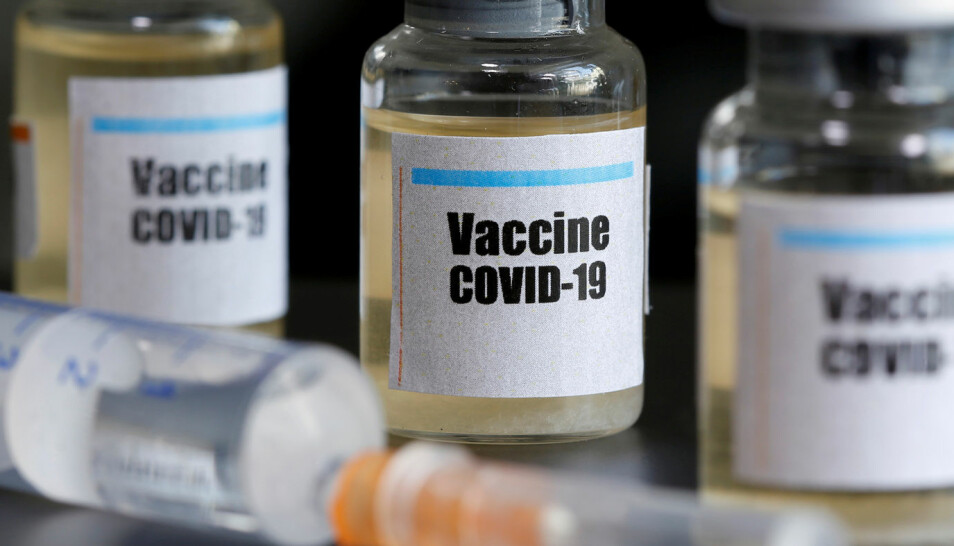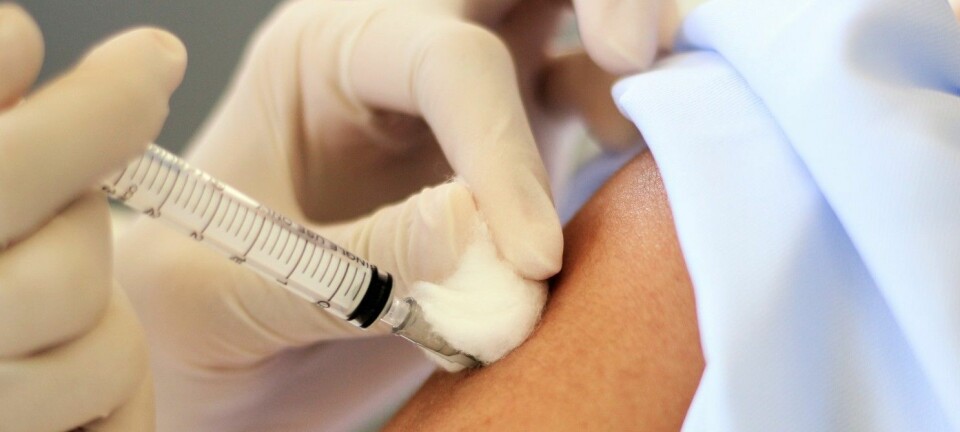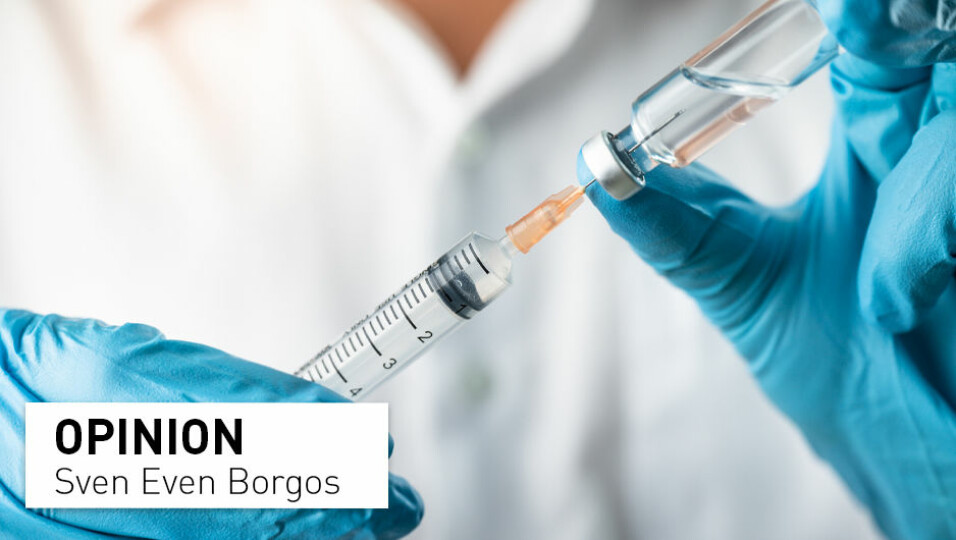Share your science:

A range of different COVID-19 vaccines are already being tested in humans. But how will the vaccines actually work?
SHARE YOUR SCIENCE: At least 200 different vaccines against COVID-19 are under development and more than 20 candidates are being tested on healthy individuals. This gives hope that one or more will give protective immunity. But how are the vaccines designed and are there any obstacles?
A range of COVID-19 vaccines are under evaluation in animals and humans. While most are at the pre-clinical stage, a handful has entered early but also late clinical trials. These are designed in very distinct ways, each with their own potential challenges.
The new coronavirus (SARS-CoV-2) is named for the crown of protein spikes displayed on its surface. The crown protein, also referred to as the Spike, is required for the virus to infect our cells. The result is release of new virus copies that can infect other cells. This may make us ill and lead to further spread of the virus.
On January 11, the Chinese authorities published the recipe for the new coronavirus, its genetic code. This inspired the company Moderna to develop a so-called messenger RNA-based vaccine (mRNA 1273).
Messenger RNA carries the instruction to make proteins. As such, RNA vaccines against the coronavirus will give rise to viral proteins. Upon vaccination with mRNA-1273, cells in your body will produce the crown protein, and the immune system will recognize it as foreign.
The aim is to gain immunological memory, which is the ability of the immune system to rapidly and effectively respond to a foreign substance that the body has previously encountered - in this case, the crown protein that the vaccine is built on. Hopefully, this will give long-lasting protection against the real virus.
It seems to work – but for how long?
Only 9 weeks after the Chinese authorities revealed the recipe encoding the new coronavirus, mRNA-1273 was given to 45 healthy adult volunteers’ ages 18 to 55 years. The work was partly funded by the Coalition for Epidemic Preparedness Innovations (CEPI), which is headquartered in Oslo.
Testing of the vaccine on healthy individuals is done to address whether it is safe. At the same time, it will reveal whether the vaccine has the capacity to activate the immune system, and induce production of antibodies that specifically can bind the viral protein. The goal for vaccines is to elicit potent and effective antibodies that protect against infection.
Recent data from a clinical Phase 1 trial with mRNA-1273 show that antibodies are produced in all participants and that the vaccine is well tolerated. In addition, the company reports that the antibodies raised have the capacity to neutralize live SARS-CoV-2 when tested in two different assays. They also demonstrate that the vaccine generates specific T cell immunity. These results cause optimism, but if the induced responses will give long-lasting and protective immunity remain to be addressed.
While it is encouraging that the mRNA vaccine induces immune responses against the crown protein, it is uncertain whether this will provide protection at the mucosal barriers of the upper and lower respiratory tract, where the coronavirus is entering our body. Efficacy trials are needed to determine if the vaccine can protect against development of COVID-19.
Fast forward
Clinical testing of mRNA-1273 is mowing fast forward. Moderna has enrolled both younger and older adults for an on-going Phase 2 study, and is recruiting around 30,000 adults at high risk of contracting the coronavirus for a Phase 3 study. These enrollees will help compare the vaccine to placebo injections. The trial is planned to start at the end of July. Moderna is on track to be able to deliver up to 1 billion doses per year from 2021.
Another CEPI-supported company, CureVac, has also come up with its own mRNA vaccine (CVnCoV). The company claims that it provides high levels of protective antibodies in their animal models. A phase 1 study on healthy volunteers is on-going, and recently it was stated that the vaccine is tolerated and induces specific immune responses.
Yet another example is two mRNA based vaccines developed by Pfizer in collaboration with BioNTech that have entered Phase 1/2 clinical studies.
All the mRNA-based vaccines are encapsulated by lipid nanoparticles to ensure delivery and uptake in our cells, which will enable the body to produce its own medicine. In contrast, DNA vaccines, such as the one from Inovio (INO-4800) requires electric pulses via a proprietary device for temporary opening of the cells to let the vaccine get inside.
“Common cold” viruses as vaccine carriers
Another attractive approach is the use of so-called adenoviruses, common viruses used as vectors for delivery of genes encoding viral proteins. The advantage is that such viral vectors have surface proteins that help facilitate rapid delivery into our cells. Adenoviruses also trigger strong inflammatory responses that can boost the vaccine effect.
These viruses normally cause cold-like symptoms such as fever, sore throat, pneumonia and diarrhea. But when used in medicine, they have been genetically modified in the laboratory so that they can no longer make new copies after entering human cells. Therefore, the virus-based vaccines will not be harmful to us when used for vaccination.
The Chinese company CanSino Biologics uses human adenovirus serotype 5 to deliver the crown protein (Ad5-nCoV). So far, it has been reported that the vaccine induced production of protective antibodies when tested on 108 healthy volunteers in a Phase 1 study. 3 different doses were given, where the highest dose caused side effects such as fever, fatigue, headache and muscle aches. The company thus decided to go ahead with the second highest dose. Importantly, about 50 per cent of those who received this dose did not develop protective antibodies.
Despite this, the Chinese government has approved the use of the experimental vaccine for the country’s military personnel. It is unclear whether the vaccine will be mandatory or voluntary.
The strategies come with an Achilles heel
The choice of “common cold” viruses as vaccine vectors may be problematic. The reason for this is that our immune system recognizes the entire virus, and that the vast majority of us have actually been exposed to these viruses before.
This means that many of us have antibodies in our blood that can rapidly recognize the viruses and as such limit the vaccine effect. This may be a major handicap.
In collaboration with the Leo James' laboratory in Cambridge UK, my research group has contributed to studies that demonstrate how this happens.
It turns out that antibodies that we make naturally against adenoviruses do not necessarily prevent the virus from entering cells, but actually follow the viruses inside our cells. There they bind a protein called TRIM21. The consequence is that the virus in complex with the bound antibodies are rapidly broken down into small pieces and removed from the body. This biological process is very efficient and limits the vaccines.
When we used a modified human adenovirus 5 to vaccinate mice against cancer, we demonstrated that the vaccine effectively slowed growth of the tumor cells. However, when we repeated the experiment in the presence of antibodies specific for the virus, the cancer continued to grow. The same phenomenon was demonstrated when mice were vaccinated against an influenza virus where the mice died only when the virus was covered with antibodies. Said differently – the presence of antibodies to the adenoviruses may cause the vaccine to not work properly.
In the United States, Europe and China, around 40-50 per cent of the population has antibodies in their blood against adenovirus 5. The number may be as high as 80 per cent in Africa.
This is consistent with the fact that about 50 per cent of the healthy volunteers in the Chinese study had pre-existing antibodies to the adenovirus 5 based vaccine candidate. Therefore, there is reason to believe that such a vaccine strategy will not work effectively on a larger part of the global population.
The virus based vaccines are given as intramuscular injections, and it will be interesting to see how pre-existing immunity will affect the outcome. It is expected that antibodies against the adenoviruses are found throughout the body.
A handful of other vaccine candidates under development are based on the same principle. For instance, the company Johnson & Johnson's uses human adenovirus serotype 26. Their advantage is that this particular virus is not as prevalent as adenovirus 5. This may increase the effect of the vaccine.
May chimpanzees or gorillas help?
Another approach is to utilize viruses from other species that have the capacity to infect human cells. One example is a vaccine built on a modified virus from chimpanzees (AZD1222), which is used by AstraZeneca in collaboration with the University of Oxford. Another example is the company ReiTheras that has a vaccine candidate built on a virus from gorillas.
AZD1222 is one of the more advanced vaccine candidates, which has already entered large-scale evaluation in a phase 3 trial. So far, vaccination of non-human primates has demonstrated protective responses in the lower respiratory tract, but little in the upper respiratory tract. This may indicate that the vaccine may slow disease progression, but not necessarily stop the spread of the coronavirus.
This week data from their clinical Phase 1/2 study was reported, showing that the vaccine has an acceptable safety profile and generates both robust antibody and cellular T immune responses in humans. Whether these immune responses are protective will be revealed by the ongoing Phase 3 trial.
The effect of the virus based vaccines may be further enhanced by giving them multiple times. However, such a strategy may be limited, as the immune system may attack the virus vector by producing antibodies that can neutralize the vaccine. Requirement for booster shots will also increase the logistical challenge.
Yet another strategy is the use of inactivated SARS-CoV-2, which means that the virus has been treated with a chemical or physical agent in order to destroy infectivity while retaining immunogenicity. Such a “killed” vaccine candidate (PiCoVacc) has been developed by Beijing-based Sinovac Biotech.
After obtaining encouraging data from testing in rodent and non-human primates and a following Phase 1/2 study, the company has now started to recruit nearly 9,000 healthcare professionals in COVID-19 focused clinical sites in Brazil for a Phase 3 study.
Such a vaccine will not only raise immune responses against the crown protein but also other elements of the virus. Whether this will be an advantage remains to be shown.
Protein subunit vaccines
Another strategy is the use of proteins derived from the new coronavirus. These are so-called subunit vaccines where most developers are focusing on the crown protein. Upon administration, these vaccines will be given together with an adjuvant that will boost the immune system to attack the foreign protein. The choice of the adjuvant is critical and will very likely differentiate the clinical effect of the subunit vaccines.
All subunit vaccines are at the pre-clinical stage, except NVX‑CoV2373 that has entered clinical Phase 1/2. This candidate is built on the crown protein in combination with nanoparticles and adjuvant. The company Novavax is planning for a Phase 3 trial and large-scale manufacturing with the aim of providing 100 million doses at the end of 2020. This is yet another vaccine that is supported by CEPI, which in total has funded 7 clinical candidates.
Unprecedented action and collaboration
Since the genetic code for the new coronavirus was revealed in January, teams of scientists have been working furiously on a scale we have never seen before to get a vaccine in place. This happens in public-private partnerships where academic laboratories join forces with small biotech businesses and in large pharmaceutical companies, supported by governments and non-profit organizations in cooperation with national regulators.
This way of collaboration across sectors should lay the foundation for how we work at a global scale to respond to any serious disease X in the future.
So far, we have only gotten a little glimpse into how the coronavirus vaccines work in humans. The advantage though is that different vaccines are designed in very distinct ways. This increases the likelihood that one or more will provide robust protection.
The first vaccine to reach the market will not necessarily be the best for everyone.
Share your science or have an opinion in the Researchers' zone
The ScienceNorway Researchers' zone consists of opinions, blogs and popular science pieces written by researchers and scientists from or based in Norway.
Want to contribute? Send us an email!










